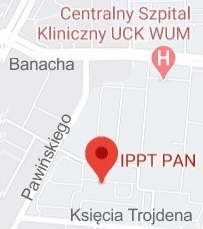| 1. |
Le Thi Ngoc Bao♦, Nguyen T., Do Muoi♦, H.N.T. Phung♦, Le Van Tan♦, Negative electronic compressibility in MoS2 monolayers,
PHYSICA B-CONDENSED MATTER, ISSN: 0921-4526, DOI: 10.1016/j.physb.2025.418022, Vol.720, pp.418022-1-10, 2026 Abstract:
The Coulomb-driven renormalization of electronic compressibility in monolayer MoS2 remains poorly understood at finite temperatures. Using the Rytova–Keldysh potential with a nonlocal dielectric response, we calculate the compressibility as a function of carrier density and temperature in experimentally relevant regimes. The exchange and correlation energies are treated, respectively, within the noninteracting (NI), Hartree–Fock (HF), and random phase approximation (RPA) frameworks. We demonstrate that the RPA, through enhanced screening induced by many-body correlations, yields negative values of the electronic compressibility,
in agreement with recent measurements resolved in temperature and density. At high temperatures ( Keywords:
Graphene, Quantum well, TMDCs, Compressibility TMDCs, Capacity quantum Affiliations:
| Le Thi Ngoc Bao | - | other affiliation | | Nguyen T. | - | IPPT PAN | | Do Muoi | - | other affiliation | | H.N.T. Phung | - | other affiliation | | Le Van Tan | - | other affiliation |
|  |
| 2. |
Nguyen T., Le Thi Ngoc Bao♦, H. N. T. Phung♦, Le Van Tan♦, Effects of electron-electron interactions on quasiparticle properties in transition-metal dichalcogenides monolayers,
Physical Review B, ISSN: 2469-9969, DOI: 10.1103/q18p-1mbk, pp.1-40, 2025 Abstract:
Coulomb-driven renormalization of electronic spectra in monolayer transition-metal dichalcogenides (TMDCs) remains poorly understood at finite temperature. Using the Rytova-Keldysh potential with a non-local dielectric response, we calculate quasiparticle band-gap renormalization (BGR) and the Fermi-edge absorption spectrum over experimentally relevant carrier densities and temperatures. Exchange and correlation self-energies are treated successively within Hartree-Fock (HF), the random-phase approximation (RPA), and the Hubbard local-field approximation (HFA). Only the HFA, which embeds the G(q) local-field factor, reproduces recent temperature- and densityresolved measurements: it broadens the band gap at low densities and produces a density-induced redshift of the Fermi absorption edge through enhanced screening. The same framework accounts for the nonmonotonic BGR observed in cyclotron resonance experiments on disordered monolayers when disorder-induced thermal broadening is included. The results establish a local-field-corrected many-body theory as the minimal quantitative description of carrier-doped TMDCs and provide a roadmap for engineering interaction-driven electronic phases in two dimensions. Affiliations:
| Nguyen T. | - | IPPT PAN | | Le Thi Ngoc Bao | - | other affiliation | | H. N. T. Phung | - | other affiliation | | Le Van Tan | - | other affiliation |
|  |
| 3. |
Nguyen T., Dat L.♦, Van T.♦, Finite-temperature properties of monolayer MoS2: Role of electron-electron interactions,
Physical Review B, ISSN: 2469-9969, DOI: 10.1103/PhysRevB.111.155415, Vol.111, No.15, pp.155415-1-14, 2025 Abstract:
We theoretically investigate electron-electron interaction effects on the single-particle Green's function of doped monolayer MoS2, employing a massless Dirac continuum model within the random phase approximation and incorporating long-range Coulomb interactions via a modified Keldysh potential. Our calculations provide quantitative predictions for the many-body spectral function, the renormalized quasiparticle energy dispersion, and the renormalized velocity at both zero and finite temperatures, taking into account carrier density, electric field intensity, and spin polarization. We identify experimentally detectable many-body signatures that are substantially enhanced with decreasing carrier density, electric field, and spin polarization, alongside intriguing instabilities in the excitation spectrum at small wave vectors where interactions completely destroy the noninteracting linear dispersion. The velocity renormalization exhibits a leading-order temperature correction that is linear and positive, with a universal, density-independent slope in the high-density limit. We further predict an enhanced effective velocity at low temperatures and a nonmonotonic temperature dependence at higher temperatures (e.g. Affiliations:
| Nguyen T. | - | IPPT PAN | | Dat L. | - | other affiliation | | Van T. | - | other affiliation |
|  |


















